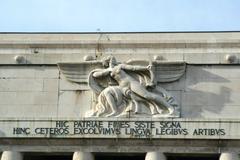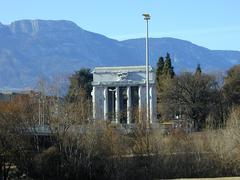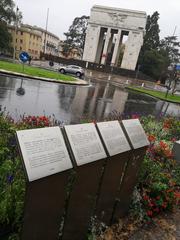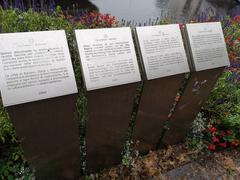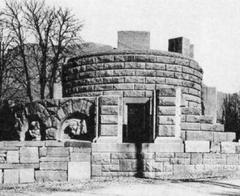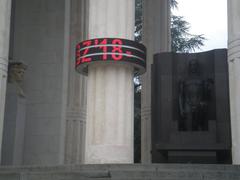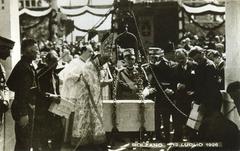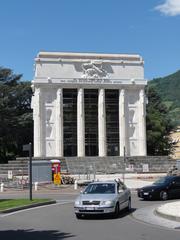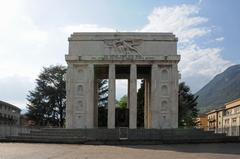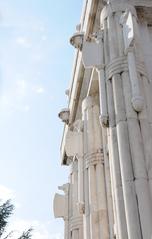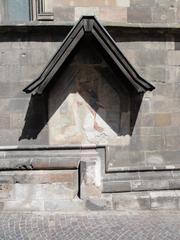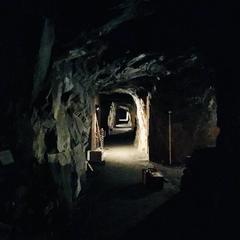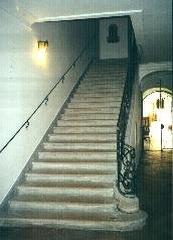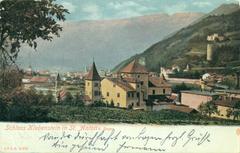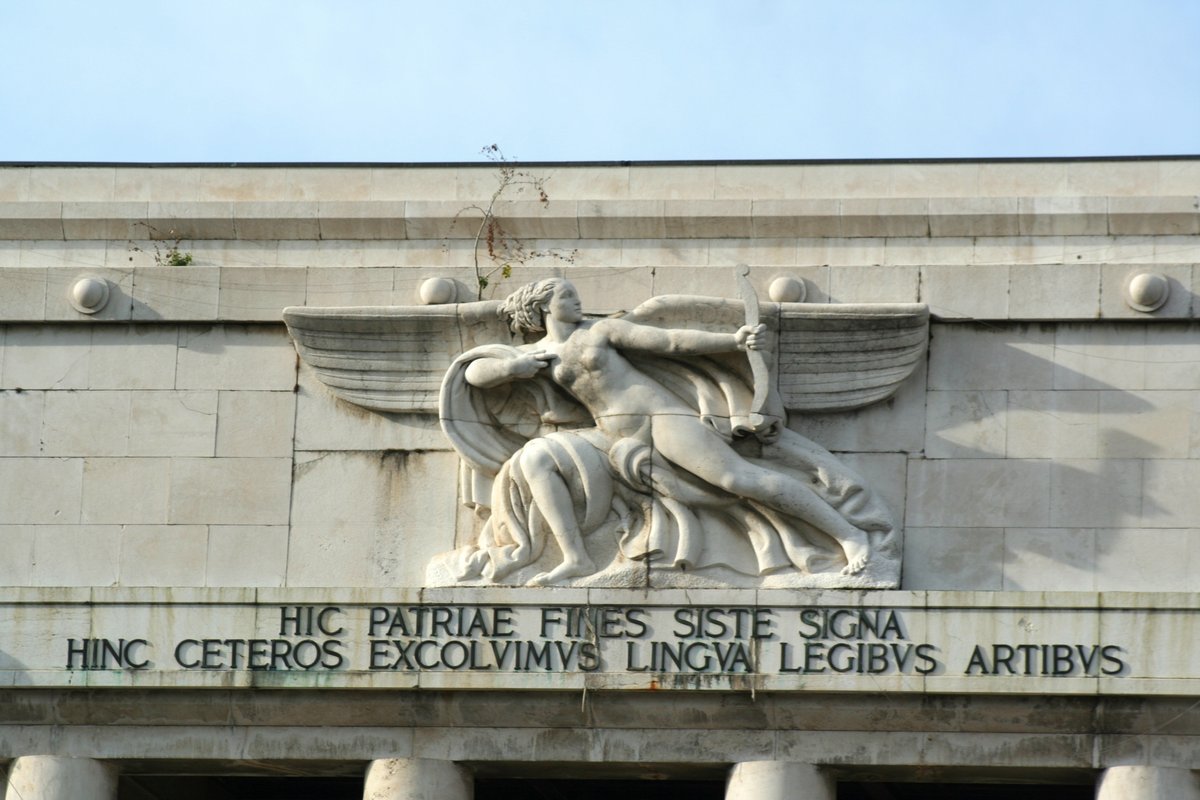
Bolzano Victory Monument: Visiting Hours, Tickets, and Historical Sites Guide
Date: 15/06/2025
Introduction
The Bolzano Victory Monument (Monumento alla Vittoria) is a landmark that embodies the layered history and cultural complexities of South Tyrol. Erected between 1926 and 1928 under Benito Mussolini’s Fascist regime, the monument stands as a powerful architectural and ideological statement in the heart of Bolzano. Its imposing marble arch, designed by Marcello Piacentini in the Italian Rationalist style, serves both as a site of remembrance and a canvas for ongoing dialogue about identity, power, and reconciliation in a region shaped by its Italian and Austrian heritage.
Today, the monument is not only an architectural highlight but also houses the permanent exhibition “BZ ’18–’45: One Monument, Two Dictatorships” in its crypt, which contextualizes the site’s history under both Fascist and Nazi rule. This guide offers comprehensive details on visiting hours, tickets, accessibility, guided tours, travel tips, and nearby attractions, helping you plan a meaningful visit to one of Bolzano’s most thought-provoking historical sites.
For official visitor information, see the Bolzano tourist website, as well as further context from BBC Culture and Suedtirolerland.
Table of Contents
- Introduction
- Historical Background and Significance
- Architectural Features and Symbolism
- Controversy and Reinterpretation
- Visiting the Bolzano Victory Monument: Practical Information
- Travel Tips and Nearby Attractions
- Visuals and Multimedia
- Frequently Asked Questions (FAQ)
- Conclusion
- References
Historical Background and Significance
Commissioned by Mussolini and inaugurated on July 12, 1928, the Bolzano Victory Monument was built on the site of a former Austrian memorial, symbolizing Italy’s assertion of sovereignty over South Tyrol after World War I. Constructed from Zandobbio marble and designed by Marcello Piacentini, the monument’s triumphal arch and lictorial (fasces) columns draw on Roman imperial motifs to project both the power of the Italian state and the ideology of the Fascist regime (Wikipedia; Bolzano.net).
The Latin inscription on the monument, “Hic patriae fines siste signa. Hinc ceteros excoluimus lingua legibus artibus,” asserts Italian cultural dominance and was deeply provocative to the region’s German-speaking majority. For many, the monument has long symbolized forced Italianization and the erasure of South Tyrol’s Austrian heritage, creating a source of ongoing ethnic and political tension (karolinum.cz).
Architectural Features and Symbolism
Design and Contributors
The Victory Monument is a striking example of Italian Rationalism, featuring geometric forms, clean lines, and monumental scale. The triumphal arch, flanked by fasces columns, was intended to evoke both ancient Roman authority and the modern power of the Fascist state. Notable artists such as Adolfo Wildt contributed to the monument’s sculptural elements, adding to its symbolic gravitas (BBC Culture).
Symbolic Elements
- Fasces Columns: Represent authority and unity, both in ancient Rome and as the emblem of the Fascist party.
- Latin Inscription: Emphasizes the Italian “civilizing mission” in South Tyrol.
- Removed and Reinstalled Statues: Copies of the Roman she-wolf and Venetian lion, originally part of the monument, now stand on the Talvera Bridge, with the originals displayed in the Bolzano Municipal Museum (Suedtirolerland).
Controversy and Reinterpretation
Since its inauguration, the monument has been a site of protest and contention. For the German-speaking population, it represented oppression, while for Italian speakers, it became a marker of national pride. Throughout its history, the monument has been the target of vandalism and even bombings, leading to protective fencing and debates over its future (BBC Culture).
Efforts to address its legacy have included contextualizing displays and symbolic interventions, such as an LED ring and critical quotations projected onto the structure. The 2014 opening of the Documentation Centre and the permanent exhibition “BZ ’18–’45: One Monument. One Town. Two Dictatorships” beneath the monument marked a significant step in historicizing and reframing the site within a critical, pluralistic narrative (karolinum.cz; basrelief-bolzano.com).
Visiting the Bolzano Victory Monument: Practical Information
Visiting Hours and Tickets
- Monument (outdoors): Open 24/7, free access.
- Permanent Exhibition (crypt/Documentation Centre):
- Tuesday to Sunday: 10:00 AM – 6:00 PM (some sources note closing at 5:00 PM; check official site)
- Closed Mondays and public holidays
- Admission: Typically free or €5–€6 for adults, with discounts for students, seniors, and groups; children under 12 usually enter free. Please confirm current pricing before your visit (official tourist website).
Accessibility
Both the monument and the exhibition are accessible to wheelchair users and visitors with mobility challenges, featuring ramps and elevators. For special needs, contact the Documentation Centre in advance.
Guided Tours and Special Events
- Guided Tours: Available in Italian, German, and English (sometimes French). Advance booking is recommended, particularly for groups.
- Special Events: The monument hosts commemorations and public discussions, especially around historical anniversaries and South Tyrol autonomy celebrations.
How to Get There
- Location: Piazza della Vittoria, central Bolzano, near the Talvera Bridge.
- Public Transport: Accessible via local buses (stops “Piazza Vittoria” and “Via Museo”), and about a 15-minute walk from Bolzano train station.
- Parking: Available in nearby lots for those arriving by car.
Travel Tips and Nearby Attractions
Nearby Sights
- South Tyrol Museum of Archaeology: Home to Ötzi the Iceman, a short walk from the monument.
- Piazza Walther: Bolzano’s main square, surrounded by shops, cafes, and the city’s cathedral.
- Talvera Meadows and Lungotalvera Promenade: Scenic parks adjacent to the monument for walking and relaxation.
- Bolzano Old Town: Explore medieval streets, markets, and local eateries.
Best Times to Visit
For a quieter experience, visit weekday mornings or late afternoons. The monument’s architecture is especially striking during early morning light or sunset.
Visuals and Multimedia
- High-quality images of the monument, Victory Square, and the Documentation Centre are available on the official Bolzano tourism website.
- Virtual tours and interactive maps enhance planning and remote exploration.
Frequently Asked Questions (FAQ)
Q: What are the visiting hours of the Bolzano Victory Monument and its exhibition?
A: The outdoor monument is always accessible. The underground exhibition is open Tuesday to Sunday, 10:00 AM–6:00 PM (check for seasonal changes).
Q: Is there an entrance fee?
A: Outdoor access is free. Exhibition entry is usually €5–€6, with various discounts; children under 12 often free.
Q: Are guided tours available?
A: Yes, in multiple languages; book through the tourist office or Documentation Centre.
Q: Is the site accessible for people with disabilities?
A: Yes, both monument and exhibition have ramps and elevators.
Q: How do I get there by public transport?
A: Bus stops “Piazza Vittoria” and “Via Museo” are nearby; 15-minute walk from the train station.
Q: What else can I see nearby?
A: South Tyrol Museum of Archaeology, Piazza Walther, Talvera Bridge, Bolzano’s historic center, and the Dolomites.
Conclusion
The Bolzano Victory Monument is much more than a relic of the past—it is a living site of dialogue and reflection that invites visitors to explore South Tyrol’s complex identity and history. Through its imposing architecture, evolving exhibitions, and active reinterpretation, the monument serves as both a warning from history and a catalyst for reconciliation. With accessible visiting hours, guided tours, and proximity to other cultural attractions, it stands as a must-see destination for anyone interested in the intersections of history, art, and society.
For the latest updates on hours, tickets, and events, visit the official Bolzano tourism website. Enhance your experience by downloading the Audiala app and following related social media channels for news and travel inspiration.
References
- Bolzano tourist website
- BBC Culture
- Suedtirolerland Documentation Centre
- Karolinum.cz
- Wikipedia: Bolzano Victory Monument
- CBC News
- World City Trail
